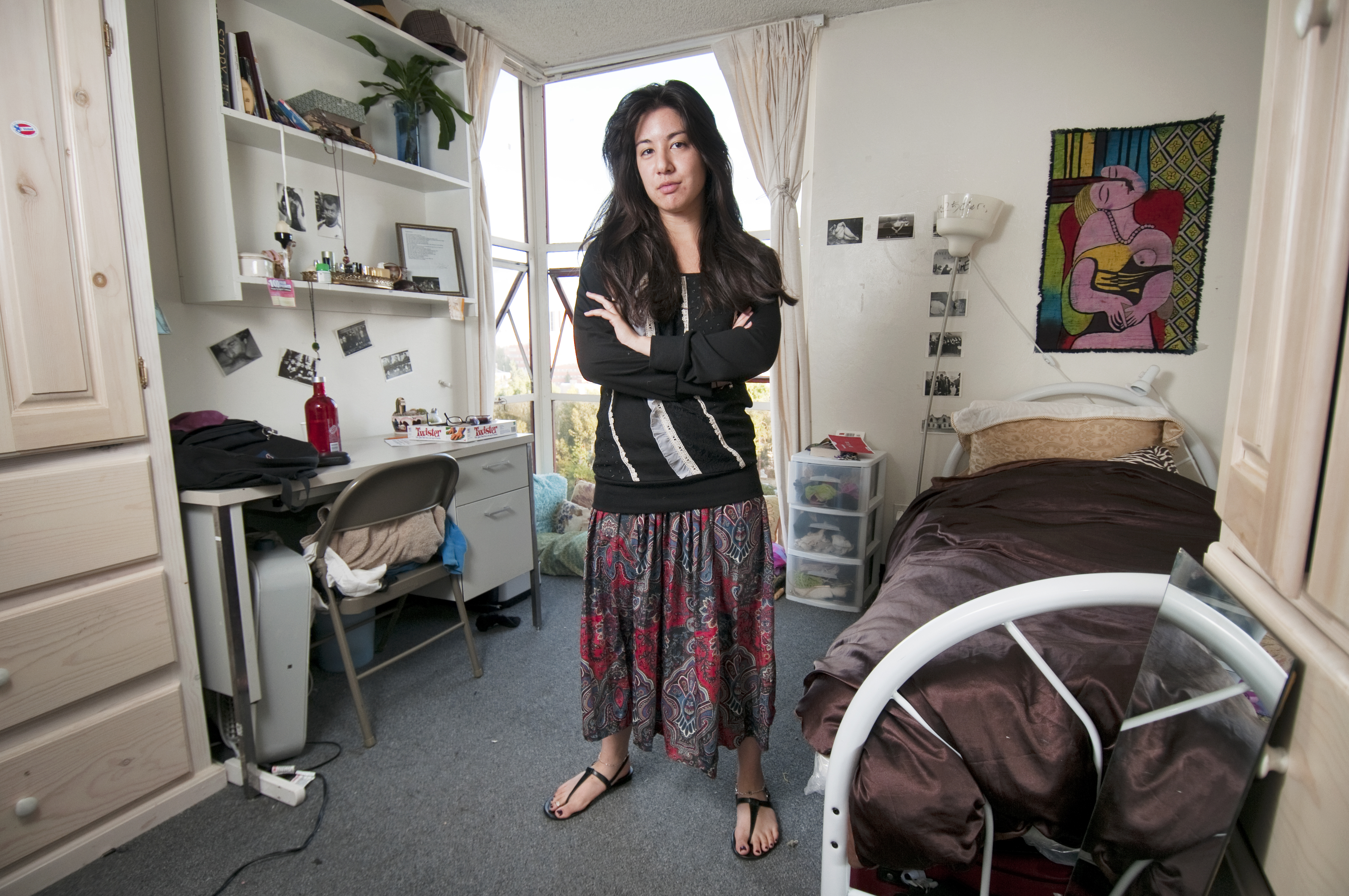UCLA’s cooperative housing options offer more than chores as tenants form close social ties living and working together

Fourth-year anthropology student Sarah Tadayon lives in the Co-op, part of the University Cooperative Housing Association.
Living in the co-op
$1,357
Cost of living in a Hardman-Hansen Hall triple in the Co-op for a quarter
$2,832
Cost of living in a triple in a residence hall for a quarter
4
Minimum number of hours worked each week by Co-op tenants
SOURCE: UCLA Housing Services
By Kendall Rogers
Feb. 1, 2011 1:10 a.m.
Once a month, Ayesha Bulegoda spends her day cooking a dinner of Indian food for her 400-plus roommates.
All of these students know one another well. All of them do chores together day in and day out. Some of them even cook for one another on a regular basis.
These students are all tenants of Hardman-Hansen Hall, one of three buildings of the University Cooperative Housing Association, more commonly known as “the Co-op.”
Occupants of the Co-op pay between $1,350 per quarter for a triple-occupancy room and $1,750 per quarter for a single, which are about the size of rooms in the residence halls. The cost covers rent, utilities and 19 meals per week, said Arusha Weerasinghe, executive director of the Co-op, who is one of the twelve adult, non-student directors.
There is a catch, however, to this Landfair Avenue housing option ““ chores.
“(The Co-op) is entirely student-run, so the students are in charge of everything from daily upkeep to dinner arrangements,” Weerasinghe said.
This housing opportunity encourages students to share cooking and bathroom cleaning duties with others in their building. Every tenant is required to do four hours of work for the high-rise-style Co-op each week. While this distribution of cleaning and work is similar to that divvied between roommates in an apartment, the tenants also share large common areas similar to those of a residence hall, such as the downstairs common room, kitchen, and patio.
This arrangement yields a living situation that combines the feel of dorm life and the responsibilities associated with an apartment lifestyle.
Three rooms share one toilet, one sink and one shower, which fourth-year anthropology student Sarah Tadayon said often leaves the bathroom occupied at inopportune times.
In addition to the everyday chores of cleaning and maintaining the building, the tenants cook for each other.
Bulegoda, a second-year finance student at Santa Monica College, is on the kitchen crew and is responsible for cooking and cleaning in the communal kitchen.
Every tenant is placed on one of the kitchen, technology assistance, garden or other crews at the beginning of the quarter and is then responsible for completing four hours of work for that crew every week. Should a tenant miss work, they will be billed $10 for each hour skipped on their next housing payment. If students are willing to work more than the mandated four hours in a week, they can do so and earn $7 an hour that will go towards their housing bills, said Sean Massih, a Co-op resident and second-year math student at Santa Monica College.
Bulegoda is Sri Lankan, and about once a month, she and the rest of the kitchen crew cook Indian food for the roughly 400 people who live in Hardman-Hansen Hall. On these days, she and the other tenants are responsible for going to the store and buying the food needed in addition to doing all of the cooking and cleaning. Afterwards, the Co-op reimburses the students for these expenses.
According to Weerasinghe, the Co-op is usually about 60 percent foreign exchange students.
“Everyone finds out about this place from a friend or a friend of a friend. No matter where you are from, India or the United States, I think that networking works the same,” Bulegoda said.
Not all of the tenants are UCLA students. Though the Co-op was founded and established for UCLA students, who are given top priority, 20 percent of the facilities can be filled by students from Santa Monica College and other local universities.
Even with the work associated with the Co-op, students say it is a fun atmosphere where everyone in the building knows each other.
“Last night, we played Twister (in the common room), while there was an intense ping-pong tournament going on. Everyone was just drinking and having a good time together,” Tadayon said, “We’re like our own little community.”
Students said once they come to the Co-op they have no desire to leave.
“I’d never even heard of it until my friend brought me over here one time,” said UCLA alumnus Zander Bice, who lived in the Co-op during his second, third, and fourth years. “Now, I don’t even want to think about what my college experience would have been like had I lived anywhere else.”


